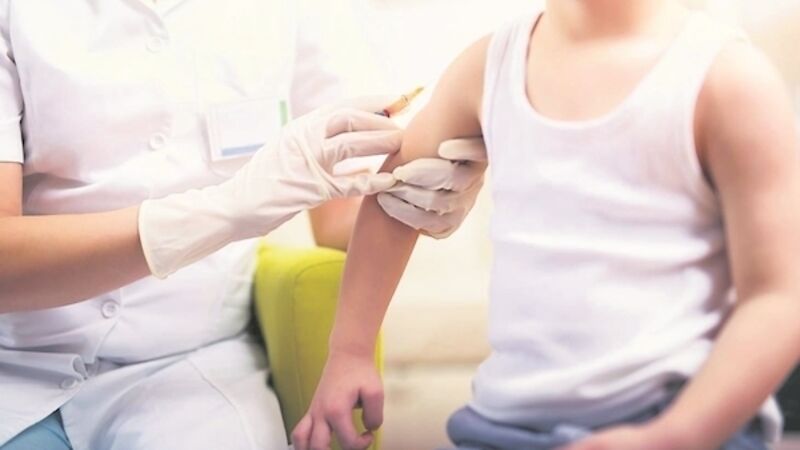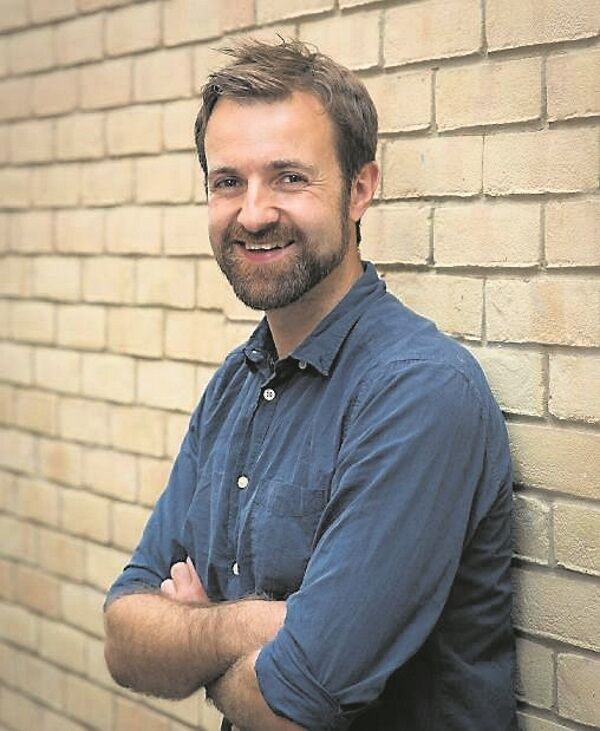Injection of reason: The science behind vaccinations

talks to author and maths expert Kit Yates, who makes a fact-based argument for vaccine programmes, including the HPV jab
Kit Yates’s mother’s untimely death has had a strong impact on his views. “She contracted cervical cancer it when I was five, she was 40,” he told me over the phone. “She was given the all-clear for a couple of years and then it came back really aggressively, there wasn’t much we could do.
"I was so young I didn’t know much about it, but I have chatted to my Dad a lot about it recently, and that’s why I’m such a keen advocate of the HPV vaccine.”
His new book, , is timely, given the debate raging over the pros and cons of the vaccine, particularly now that it has been made available here for boys in secondary school.
Vocal opponents of the vaccine, typically on social media, claim there can be side effects such as increased heart-rate and chronic pain.
The European Medicines Agency investigated these claims in 2015 and found they had no basis, but despite evidence the HPV vaccine is effective in preventing cervical cancer and a number of other diseases, vaccination rates dropped for a while as parents decided the risks weren’t worth it.
They are on the rise again on the back of government information campaigns, with uptake rates among girls in Ireland now standing at 70%.
Yates is a staunch advocate of the vaccine, his book making a fact-based argument for the use of maths in areas ranging from disease control to medicine, media and the law. It’s not a classic maths book — there is barely an equation in sight.
It is an engaging, enjoyable look at how phenomena spread and go viral, examining everything from the ice-bucket challenge, pyramid schemes and the way that milk turns sour.
Yates is no amateur enthusiast. A fan of maths and biology in school, he was forced to choose between the two for his A-Levels, and chose maths because he didn’t like “cutting stuff up”, as he puts it.
He then went onto study maths to PhD level at Oxford University, where he was influenced by Northern Irish man Philip Maini, professor of mathematical biology.
This reignited his interest in biology and it remains an important part of his work as associate professor in applied maths at the University of Bath.
In the final chapter of his book, Susceptible, Infective, Removed: Containing Disease Is in Our Own Hands, Yates shows how mathematics can be used to maximise the power of a vaccine, and even eradicate it in the case of smallpox.
The key is a variable known as R0, which represents the basic reproduction number of a disease, or the average number of people who are infected by one carrier. It puts a numerical value on what we mean when we say a virus is fairly infectious or highly infectious and so on.

This number varies from disease to disease — ebola has a reproduction number of 1.5; polio has 6, measles ranges from 12 to 18 depending on the strain. As long as R0 is greater than 1 (i.e. every carrier infects more than one other person), the infection will spread exponentially.
But the number can also be lowered through interventions such as quarantine and vaccine. Critically, if you can hold R0 below one, the infection will die out. This is why vaccines are so effective in containing the spread of a disease. If someone can’t catch a disease because they are immune to it, that reduces the average number of people that are infected when they come into contact with a carrier.
It also means you don’t have to vaccinate everyone. Thanks to mathematical biology, you can estimate the proportion of a population that would need to be vaccinated to get R0 below 1, which means that those whose immune systems are too weak to tolerate vaccination (elderly, newborn, pregnant women etc.) can still enjoy the protections. This gives a given group of people what is known as herd immunity.
In 1998, a study led by Andrew Wakefield, published in , proposed a link between the MMR (measles, mumps, rubella) vaccine and autism spectrum disorders. The media picked up on this in a series of articles, one in the Daily Mail running under the headline ‘MMR killed my daughter.’
later retracted the article, and a discredited Wakefield (his study was carried out on only 12 children) was erased from the medical register in the UK, but the damage was already done.
Donald Trump couldn’t resist getting involved, linking vaccines to autism in a 2014 tweet that has almost 20,000 likes, and this was before he became a Twitter superstar.
The upshot is that vaccination rates fell off, which led to the recent re-emergence of measles in Britain and the US.
As Kit Yates points out in his book, examining a 2015 measles outbreak that was traced to Disneyland in California, the vaccination rate to those exposed may have been as low as 50%, well below the threshold required to give the group the protection of herd immunity.
Yates is insightful about the use of the HPV vaccine. Although he couldn’t say for certain if it would have saved his mother, he is adamant that is hugely effective in containing not just cervical cancer, but a range of other diseases.
This is particularly relevant now that the vaccine is being administered to boys in secondary school.
This is an issue of equality of protection as well as public health, says Yates.
He points out that two strains of HPV (16 and 18) contribute to 50% of penile cancers, 80% of anal cancers, 20% of mouth cancers and 30% of throat cancers.
The vaccine will also protect men who have sex with men. “The prevalence of HPV in men who have sex with men is significantly higher than in the general population. In the US, the incidence rate of anal cancer in this group is over 15 times higher,” he writes.
I wind up our chat by asking him if his own kids, six and four, have the had the MMR injection. “I’m a bit needle shy. I took my son for a double shot, he started crying and wailing, it’s not pleasant. But it’s nothing compared to what can go down if you don’t get your kids vaccinated.”
The end of smallpox
- Smallpox killed an estimated 400,000 people a year in 18th-century Europe, up to 20% of all deaths on the continent
- Half of those who survived were left blind or disfigured
- A series of physicians and scientists (including Edmund Halley of Halley’s Comet fame) worked on models and vaccines to contain the virus, but it continued to kill people up to the 1970s
- By then, mathematical biologists knew that smallpox had an R0 (reproduction number) of about 4, and therefore the World Health Organization knew they had to vaccinate 75% of the population under threat to achieve herd immunity
- They went with 80% to give themselves a margin of error, and in 1977 smallpox was finally eradicated. It is the only disease we have ever managed to eradicate
- Smallpox killed an estimated 400,000 people a year in 18th-century Europe, up to 20% of all deaths on the continent












